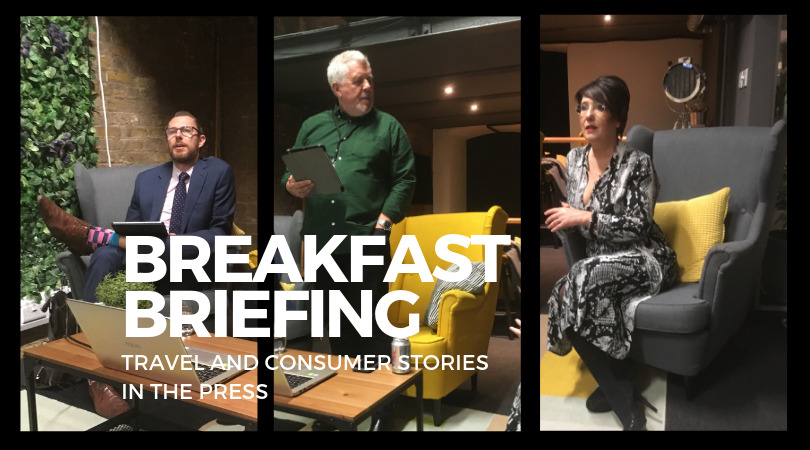Whilst newspapers are often full of depressing updates about society; whether it’s about the declining state of our health, the fact millennials can never afford to leave home or the constant threat of terrorism every time you open your front door, there are sections of the press that can give us much needed moments of escapism. The Travel and Consumer pages. Whether we want to lose ourselves dreaming of distant shores, dream of owning the brand new must-have gadget or empower ourselves by learning how we can improve our own personal finance, the travel and consumer pages of the paper are ever popular to audiences of all shapes and sizes.
We invited Award Winning journalist, and Travel Editor of The Sun, Lisa Minot and her colleague, fellow award winning journalist, Daniel Jones, The Sun’s Consumer Editor to talk about what they look for in a great story. They were accompanied on our panel by our in-house Head of News, Alan Edwards, who has over 20 years of experience in journalism, having worked most recently as Night Editor at The Sun.
After months of running our successful breakfast briefings, we realised that a lot of the advice is the same. And don’t worry we’ve given you that information but there were three top tips that came from this seminar that stood out for us:
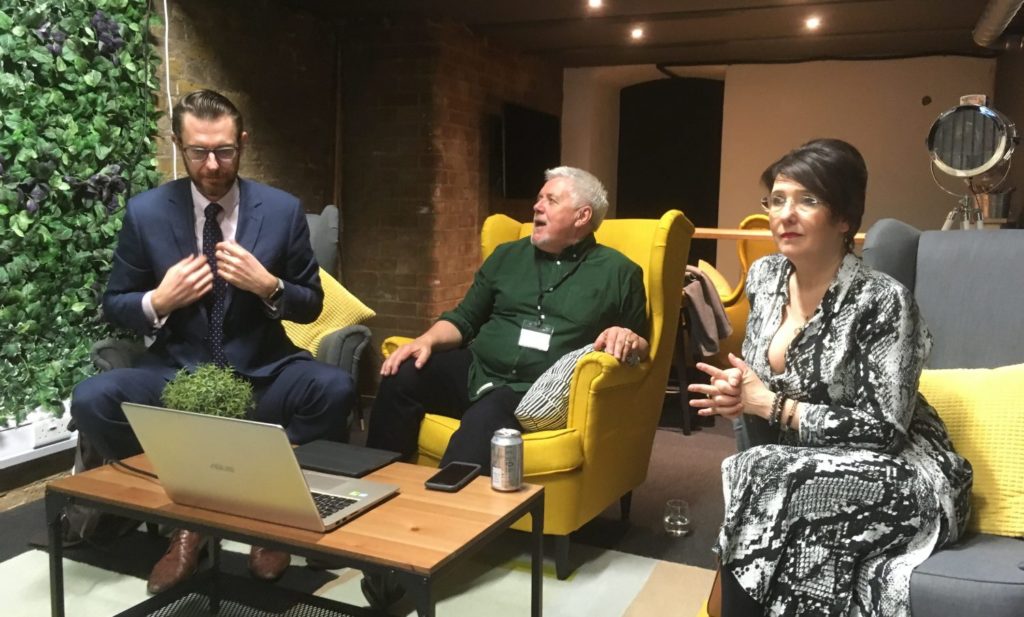
1. THINK ABOUT YOUR IMAGES
Images were something that came up in Dan and Lisa’s advice, again and again. That’s perhaps not surprising when you think how visual travel and consumer stories are. Whether it’s sunsets in the Bahamas, interiors of stunning cruise ships, or even glossy pics of a brand new phone, visuals are so important for selling these two markets to audiences. It is therefore a shock to both Lisa and Dan that they get so many poor images sent to them. Lisa joked about being sent a story about a 6 or7 figure costing cruise liner that looked like they had spent ‘about 6 quid on photography’.
These are the products your brand is selling, so invest in some decent photography. And send more than 3 images. Send a range. Showcase your product. If your images aren’t there then you’ve increased your chances of that story dropping out the pages.
Not only do images help you sell your product, but they can also help you secure larger pieces of coverage. A really strong image might be placed top of the page, giving your story a page lead, rather than a little nib of coverage that you may secure without an image
2. SURVEYS. MAKE THEM SOMETHING NEW
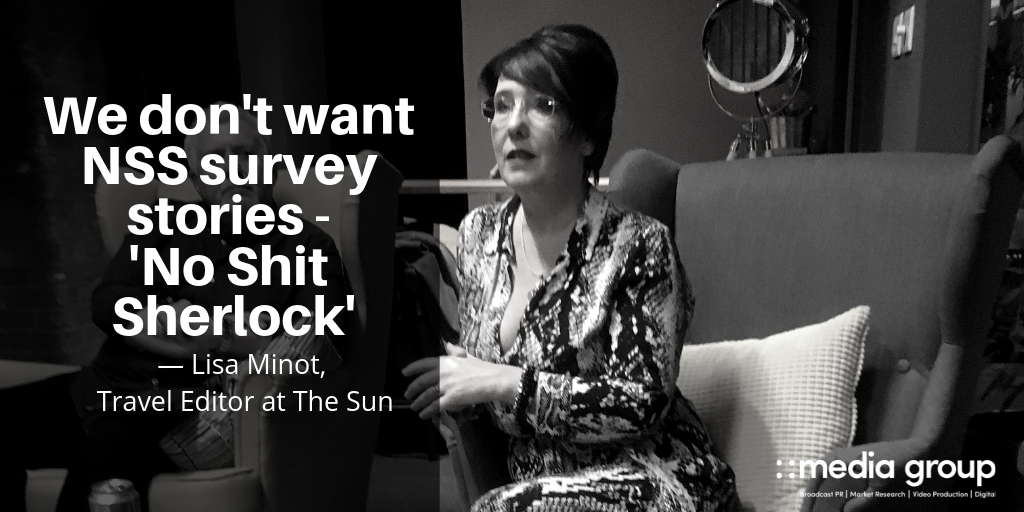
Surveys are a big part of what we do at 4media group, thanks to our in-house research division, Atomik Research, so this is a point that is close to our heart. Lisa summed up how to maximise surveys in one line: ‘We don’t want a NSS survey. That’s a ‘no shit Sherlock survey’’. A survey must tell journalists, and of course audiences, something they didn’t know. Dan added: ‘Sense check it yourself. Does it make sense to you?’ Is it new to you? If yes then send it over, if it doesn’t it might be worth rethinking it. Journalists get a lot of survey stories so if you’ve got one, “work a little bit harder or think a bit more about them”(Dan Jones).
What sort of surveys do journalists like? Obviously something they’ve not heard of but also social commentary or how we’ve changed over the years. This was something that both Lisa and Dan are a fan of. As Dan said, “People like a bit of nostalgia”. Look at how X has changed from the old days to now. Look at product X across the decades. Look at how many people used to visit X compared to now. It’s something that works well for both travel and consumer stories. Dan commented that if you can contrast a stat, looking at then versus now, then you are essentially turning something from a News in brief into a much bigger thing.
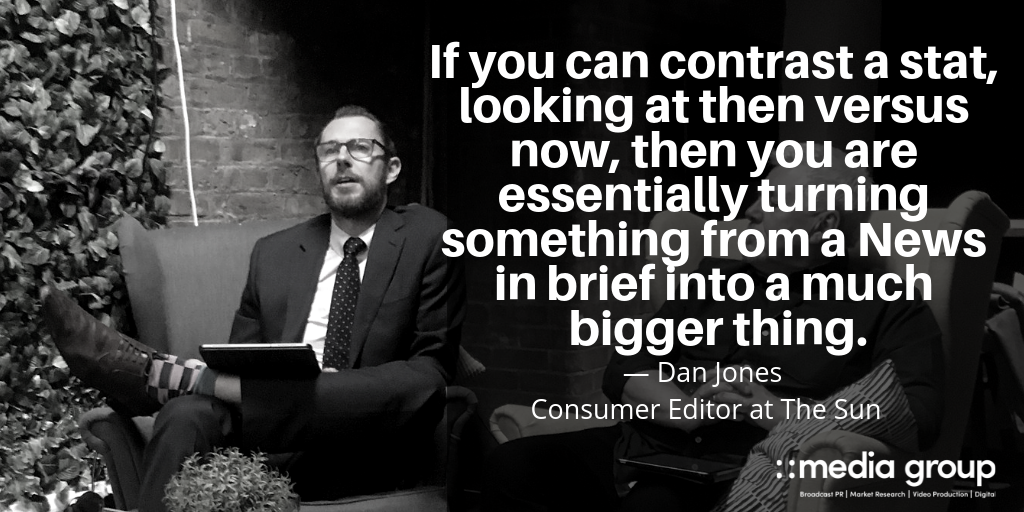
Once you’ve got the stats think about the accompaniments. Get someone who can provide something interesting to say about it. Commentary should provide an explanation of the stats, for example why it’s or we’re like that. Dan emphasised the need for an independent spokesperson. “Get some independent quotes in there…I like to have someone independent, it makes it easier for me when going to the news desks”. It gives it something more in-depth and meaty than the stats alone.
3. SEO IS IMPORTANT
You may not realize it when you’re thinking about a story that’s going to press but online news sites are fighting for attention just as much as brand websites. Lisa commented that SEO is a big part of how the Sun Online has grown so think about that when you’re aiming for coverage. She also discussed how good question stories are for SEO, i.e ‘How do I..?’ ‘When does X…’. If your story can provide answers to these types of questions the chances of landing your story increases tenfold because you’re giving the online publication something in return; an SEO boost.
Those types of stories are evergreen. Meaning they are always good. But don’t forget things change, the answers to one question may not stay the same. Those evergreen stories can be adapted to fit the times.
On the topic of evergreen information: our seminars provide plenty of it. As we mentioned in the intro, there’s advice that comes up time and time again, and Lisa, Dan, and our own Alan gave us lots of it.
So here’s a quick summary of those ‘evergreen’ tips for pitching:
- Make the subject line sing/ make the subject line your headline. Your headline is important. Alan wants us to think: “what’s the catchy headline? If there isn’t one jumping out it probably isn’t a story. If you can’t sum up your story in a few lines, it’s probably not a story. You’ve got 25 words and if you don’t sell your story in that 25 words you may as well go home”.
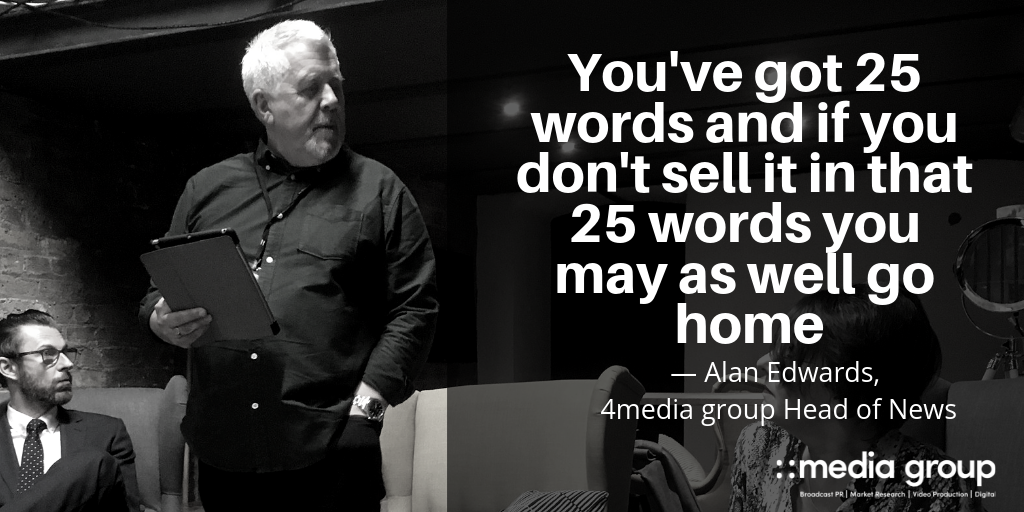
- Think about the day you send it in– know your target. What day is that column out? In which case don’t email them the day before, chances are they’ll be busy. Forward plan. Give the journalists all the info they need – if they don’t have the info they can’t publish it.
- Tailor your pitch. Again this equates to knowing who you are targeting. Dan commented that if you know the person you are targeting likes something specific in stories, include that and ‘play on that extra detail…make it clear in the email. It makes it easier for us to find’.Lisa also spoke about this, but reiterated the sentiment of many of our previous speakers- ‘face to face relationships do wonders’. Meet for a coffee, it cements who you are and what you’re about in the eyes of the person writing your story. If you are going to do this, Dan suggested that you bring a story with you. Utilise yours and their time wisely.You can also tailor your pitch with the way that you send it over. Look at how the information is usually displayed in the pages of the paper themselves. Sending over the information you have in the same style not only helps journalists find the information but also shows you have done your research and engaged with their work.
